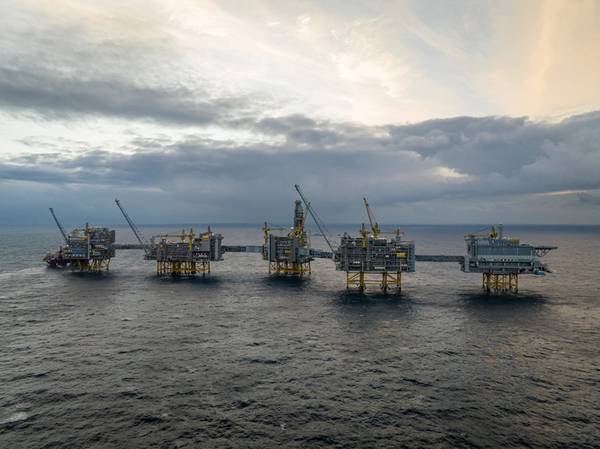
The clear winner in the race to replace Russian oil at Europe's refineries is Norway's Johan Sverdrup crude, according to Refinitiv Eikon data and traders.
Johan Sverdrup was launched in 2019, making it a relative newcomer compared to Russia's Urals grade.
Initially sold mostly to Asia, an EU ban on Russian seaborne oil imports imposed in December has opened up the European market where the medium sour grade has become a primary feedstock for refiners in countries such as Germany, Poland and Finland.
It is now the Russians who have to pay for the longer voyages to Asia, where India and China continue to buy, while Johan Sverdrup has become one of the most desirable crudes in northwest Europe.
Johan Sverdrup and Urals are both medium-sour grades with high diesel yields, with the Norwegian grade very close in quality to its Russian competitor and a lower sulphur content.
European refiners import a wide variety of grades from around the world including sweet crude from Kazakhstan, Azerbaijan and Africa, for example, for producing naphtha and gasoline.
"Johan Sverdrup has become a key element in Europe's oil industry, effectively replacing Urals as the medium sour grade of reference," said Viktor Katona, lead crude analyst in Kpler.
Poland's imports of Johan Sverdrup via the port of Gdansk in March jumped to record of more than 8 million barrels, Refinitiv Eikon data showed.
Poland stopped receiving Russian oil in February, with top refiner PKN Orlen ending its only remaining supply contract with Tatneft.
PKN Orlen's Mazeikiu refinery in Lithuania is also ramping up Johan Sverdrup purchases, taking at least two cargoes this month totalling about 1.2 million barrels.
The grade also now accounts for at least a half of Finland's monthly oil imports, the Refinitiv Eikon data showed.
Demand has supported Johan Sverdrup differentials on a free on board (FOB) basis which firmed shortly after the EU embargo on seaborne Urals, and jumped to a premium to dated Brent for a while in February, traders said.
PRODUCTION LIMIT
Norway's Equinor can currently produce 720,000 barrels per day (bpd) of Johan Sverdrup but has said it would explore the possibility of raising output to 755,000 bpd.
While Europe boosts its buying, Johan Sverdrup shipments to Asia have fallen off sharply.
In 2021 Asian demand topped 100 million barrels versus just 2 million barrels shipped so far this year, Refinitiv Eikon data showed.
Urals crude is taking up the slack in Asia, with sales increasing 10 fold in 2022 and further this year.
Urals sales in Asia have already matched half of last year's volume, pointing to record shipments in 2023, the data showed.
Some Russian crude still reaches Europe, as well. Bulgaria received an EU waiver to continue imports of Urals crude while Slovakia, Hungary and Czech Republic continue to import via the Druzhba pipeline.
Johan Sverdrup exports by countryhttps://tmsnrt.rs/3MSB0tQ
(Reporting by Reuters; editing by Jason Neely)